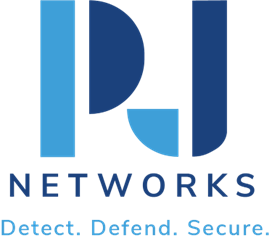Understanding the PJ Networks Technical Support Framework
Ah, the joys of technical support. Thrilling, exhausting—and oh so necessary. As a cybersecurity consultant who’s been in the trenches since the 90s (literally under desks unraveling cable knots), I’ve had my share of challenges. I started my journey back in 1993 as a network admin, cutting my teeth on networking and multiplexers (I’ll never forget the Slammer worm—it was chaos). Fast forward to today, I’m steering the ship at PJ Networks Pvt Ltd, leading a talented team that recently helped three banks elevate their zero-trust architecture. But that’s a story for a different day.
Introduction
Technical support is the backbone of PJ Networks. It’s our commitment to ensuring that firewalls, servers, and routers function seamlessly—guarding clients against potential security breaches. We dive deep into cybersecurity, not just because it’s our business, but because user security gives me sleepless nights (in a good way). A structured approach to delivering technical support isn’t just a necessity; it’s our ethos.
Support Framework Overview
Here’s the thing: Providing effective support isn’t a one-size-fits-all situation. Our framework is as diverse as our clients. And it’s structured—like a well-cooked seven-course meal—to meet specific cybersecurity needs.
- Identification. The first step is understanding the problem. Sounds obvious? You’d be surprised how often this gets glossed over. We live by the mantra ‘know thy network’.
- Analysis. Our next step is a deep dive. Looking for patterns, assessing potential risks—and taking notes like an over-caffeinated detective.
- Resolution. Fixing issues is where the rubber meets the road. But it’s not just about patching. It’s about leaving the system better than we found it.
- Prevention. This is where we shine. (I love waxing about password policies. Those things get sticky, fast.) We educate our clients, bolstering their defenses.
This lifecycle isn’t just a flowchart on the wall. It’s our gospel.
Tools & Techniques
Over the years, I’ve amassed a toolkit that might make a Swiss Army Knife look inadequate. And yes, sometimes I get sentimental about older technologies. Here’s what we rely on:
- Firewalls. Our bread and butter. We configure, monitor, and upgrade like it’s second nature.
- Stateful inspection or proxy-based—we cater to both. (Even use hybrid models when called for.)
- Intrusion Detection Systems (IDS). Because having a watchful eye is crucial.
- Signature-based or anomaly-based, sometimes both. Our seasoned approach lets us innovate.
- Zero-Trust Architecture. This isn’t just a buzzword—it’s a revolution. We helped three banks transition recently. The amount of coffee was legendary.
And about those AI-powered solutions—call me old school, but I remain skeptical. Sometimes human intuition and experience outweigh algorithms. Feel free to disagree.
Quick Take
- Identify problems clearly.
- Analyze risks—thoroughly.
- Execute robust solutions.
- Plan to prevent future issues.
There, a snapshot of our framework in four simple steps. Efficient, right?
Conclusion
So, if you’ve made it this far—congrats, and thank you. Pioneering cybersecurity isn’t a solo mission; it’s a collective effort that banks on knowledge, experience, and a strong cup of coffee. At PJ Networks, our support framework isn’t just about solving issues. It’s a promise. A dedication to stand at the front lines of cybersecurity, wielding firewalls like shields and routers like trusted warriors.
And as I unwind from a buzzing experience at DefCon (hardware hacking village, anyone?), I look forward to what the future holds. We adapt, we learn, and we secure your networks—together. Until next time, stay secure.
(P.S. Keep those passwords strong, folks. Cook them like a perfect al dente pasta—firm, with a bit of bite.)
